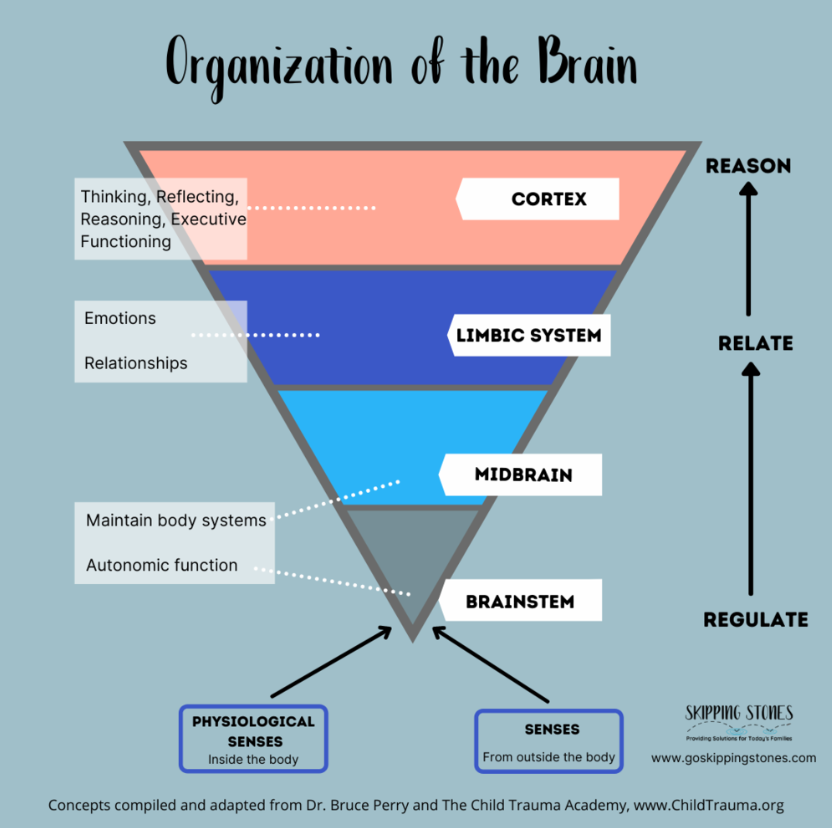By Mac Wilson, MA, LPCC
A toddler is sitting on a bench, legs swinging as their vanilla ice cream cone with sprinkles drips freely down their hand. As they get ready for the next delicious lick of sweet, tooth-freezing euphoria, their sibling accidentally nudges their arm, sending the cone flying. The child takes a horrified look at the splattered mess on concrete, takes another tearful look at their sibling, and starts to cry (dysregulation).
Their mother picks the child up, tells them it will be okay, and rocks them back and forth. After only a couple of minutes, the child is enjoying the mother’s own swirl ice cream cone, and their dessert tragedy is a part of the past (regulation). The child’s dysregulation was met with regulation, relation, and reason.
As an adult, the last time you were dysregulated, you probably weren’t rocked back and forth. But if you were, you might have been surprised by the outcome.
We often expect ourselves and others to “get it together” or “act like an adult” when we face difficult situations. But the truth about your body is that rhythm helps you regulate. Rhythmic somatosensory patterns have helped us all to regulate since we were in utero. All cultures have some form of patterned and repetitive action as part of their rituals. Unfortunately, we have lost many of those old rhythmic rituals which were essential parts of our healing and understanding of hurt, trauma, and connection.
In order to reason, you first must remind your body you are not in active danger.
Dr. Bruce Perry, a leading expert in trauma research and treatment, often describes the brain in terms of an upside-down triangle. As seen in the chart below, you require both regulation and relation before you are able to reason––which is why telling yourself to “get it together” or “act like an adult” often does not help when triggered. You first must remind your body you are not in active danger from internal or external threats in order to connect with others and reflect and reason with them.
One of the most helpful yet overlooked ways to remind your body of your safety is to first activate the sensation that reminded you that you were okay when your ice cream splattered on the ground: rhythm. Even as an adult, rhythmic movement can help you to regulate your emotional responses, and you don’t need your parents to do it for you.
Even as an adult, rhythmic movement can help you to regulate your emotional responses.
Here are some ways you can include rhythm in your daily life and when you need to regulate:
Tap each side of your body with your hands, also called bilateral stimulation
Dance, sway, or bounce
Drum or make other music
Practice yoga
Get a therapeutic massage
Attune to the sounds and movements of nature
Regularly practicing and engaging in these activities before you are dysregulated will make it easier to use when you are triggered, so consider bringing them into your everyday routine.
If you are looking to include rhythm within your therapeutic journey, Evolve in Nature therapists can help you along the way.





